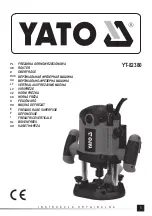
1-4
9/24/01
nections on a per channel basis from PBX office-end telephone systems to public
network T1 (DS1) services using FXO terminations. The DPT feature of this card is
especially useful in remote office or campus T1 environments where it can be used to
support one-way Direct Inward Dialing (DID) service for voice mail and call center
applications.
•
A Battery Reversal FXS/Dial Pulse Origination (BRFXS/DPO) voice card is also avail-
able that provides twelve 2-wire Loop Start connections with Tip/Ring battery reversal to
the digital T1 (DS1 line). The second function of this card is Dial Pulse Origination
(DPO), which is the functional complement to Dial Pulse Termination (DPT) provided
by the FXO/DPT voice card.
•
The 4-wire E&M/Transmission Only (E&M/TO) voice card supplies 12 channels for
connecting to private line circuits, such as PBX tie lines and 4-wire modems often found
in utility, cellular, and metropolitan area networks (MANs). Each of the twelve E&M
channels can be individually programmed to support Signaling Types I, II, IV or V. This
card can also be configured to function as Channel Equipment (normal multiplexer
mode) or as Switching Equipment for back-to-back Tandem operation sometimes
referred to as “Reverse E&M” or “Pulse Link Repeater.” The Transmission Only (TO)
operating mode provides dedicated transmit and receive paths to radio and modem
equipment uncorrupted by the insertion of A/B robbed bit signaling.
All analog line interface cards greatly exceed the required analog loop range and are proven V.34
modem compatible. Using a special patent-pending feature developed by Carrier Access Corporation,
they also perform automatic impedance matching to adapt to various analog modem types and line
lengths. Over-voltage and over-current protection are individually handled on the analog interface
channel cards, as well as on the Controller. This distributes the power redundantly so that a line fault
or over-voltage on one analog channel card does not affect the operation of another.
1.7 Local and Remote Network Management
The Access Bank II SNMP has three network management options. SNMP and CLI management are
described in detail in Chapter 14,
SNMP Management and Command Line Interface
, while GUI man-
agement software is provided in the
Access Bank II SNMP User Manual.
•
Simple Network Management Protocol (SNMP) for basic network control by a Network
Management Station via the Ethernet 10Base-T management port.
•
Command Line Interface (CLI) for complete control by a VT-100 terminal via the RS-
232 port, or by a Telnet terminal via the Ethernet 10Base-T port.
•
Windows
®
-based GUI software with graphical user interface (GUI) for user-friendly
control by a PC or laptop computer via the RS-232 port.
1.7.1 Local/Remote Mode Selection
The Access Bank II SNMP comes equipped with two sets of external DIP switches for selecting local
or remote management control. In the local hardware control mode, you can use these DIP switches
to perform self-tests for channel alignment, to select basic T1 hardware configuration parameters
Содержание Access Bank II SNMP
Страница 17: ...xx ...
Страница 37: ...3 8 9 24 01 ...
Страница 47: ...4 10 9 24 01 ...
Страница 61: ...5 14 9 24 01 ...
Страница 69: ...6 8 9 24 01 ...
Страница 87: ...FXS ID Configuration 8 14 9 24 01 ...
Страница 97: ...Battery Reversal FXS Dial Pulse Origination Card 9 24 9 24 01 ...
Страница 103: ...12 Channel FXO Dial Pulse Termination Card 10 6 9 24 01 ...
Страница 121: ...4 Wire E M TO Configuration 11 18 9 24 01 ...
Страница 139: ...12 18 9 24 01 ...
Страница 144: ...Replacing the Controller Card 9 24 01 13 5 Figure 13 3 Replacing the Controller Card ...
Страница 145: ...13 6 9 24 01 ...
















































